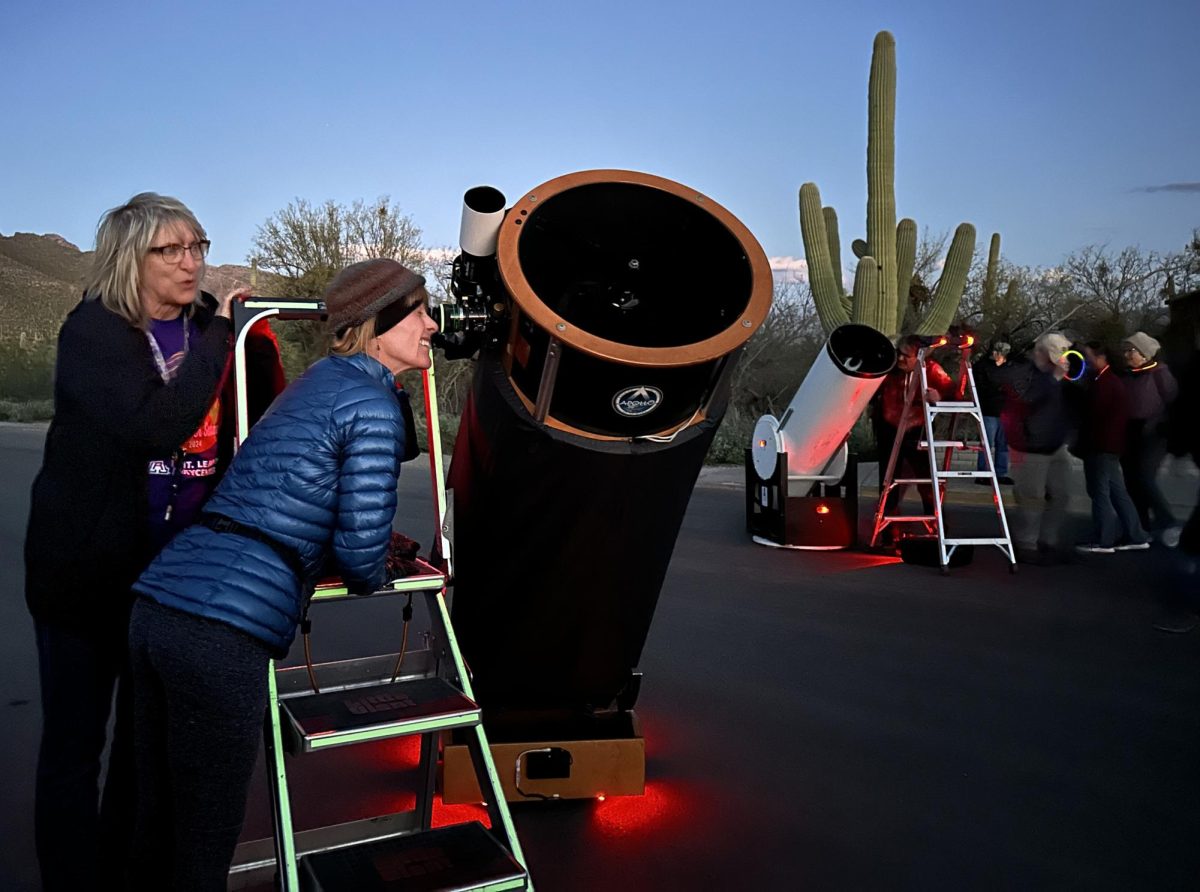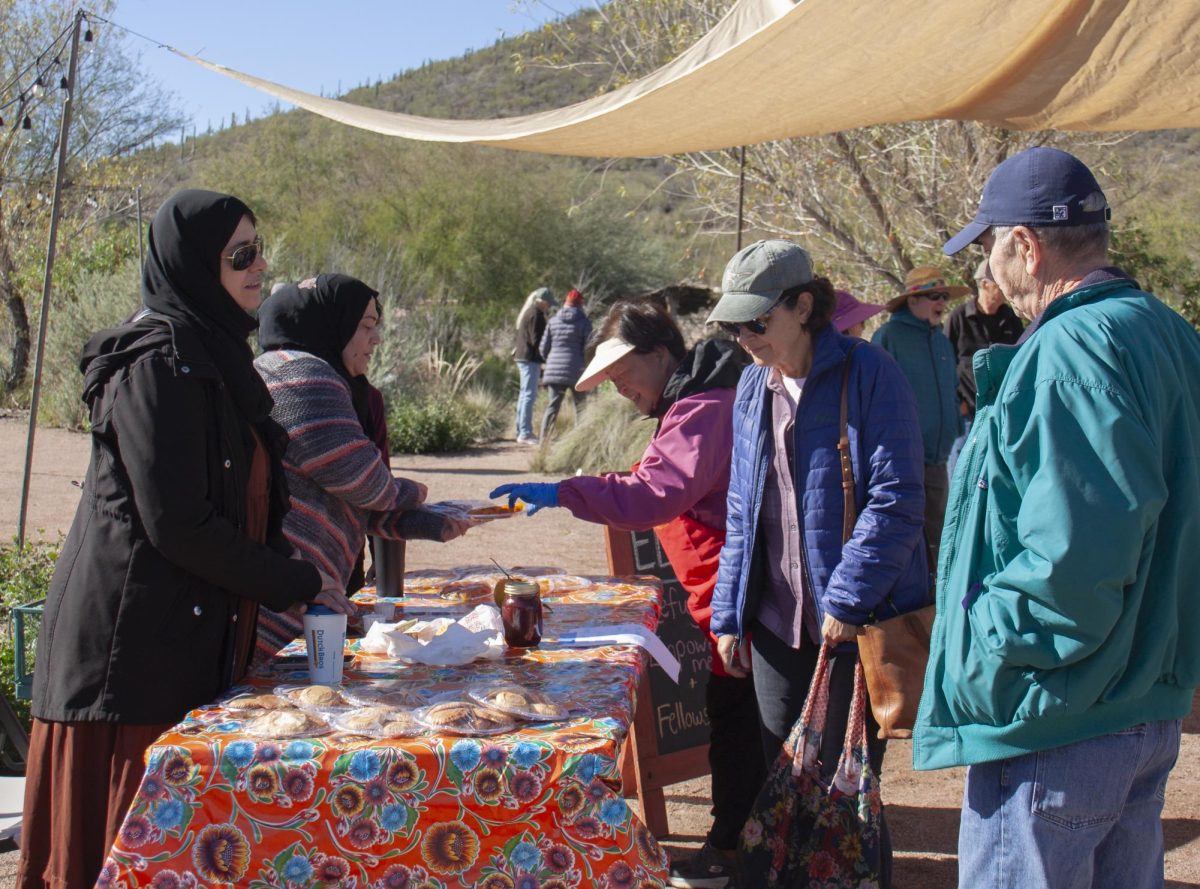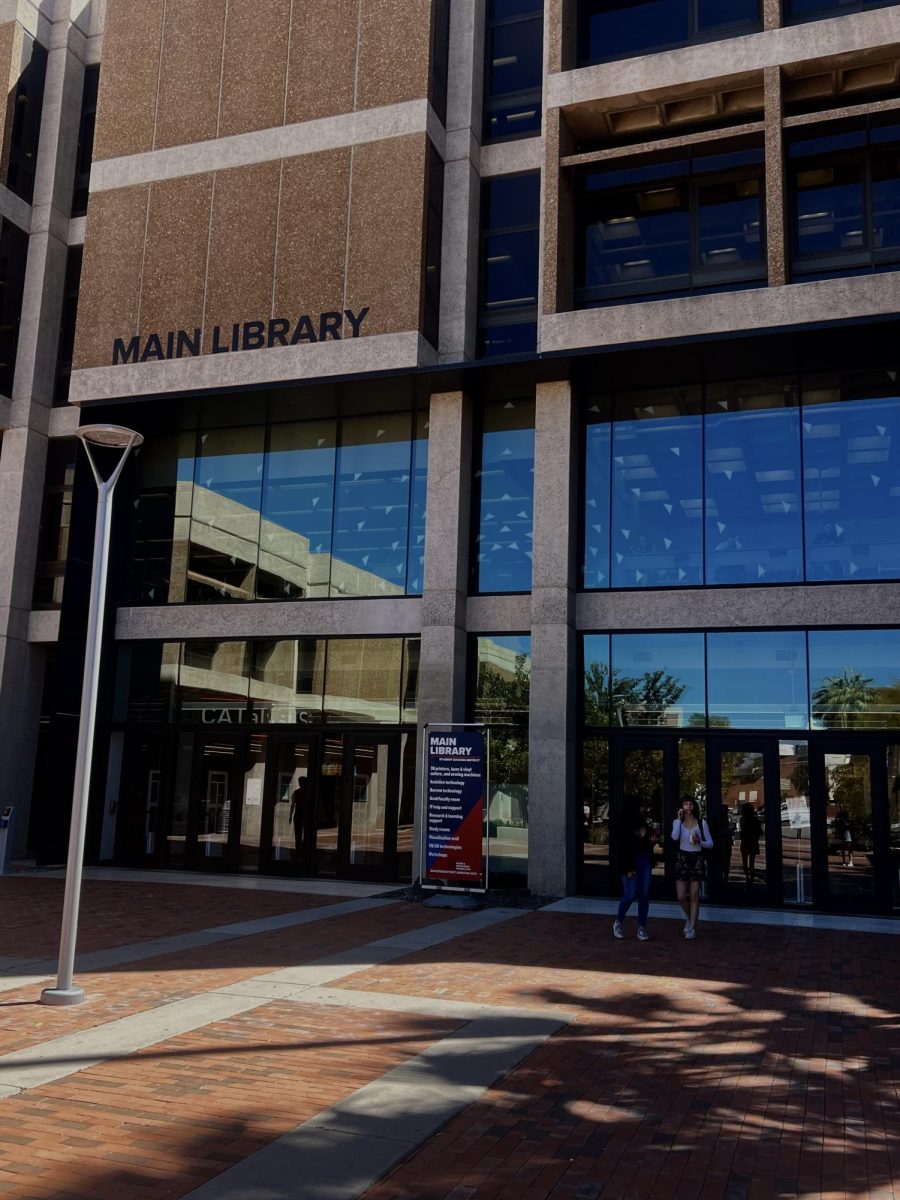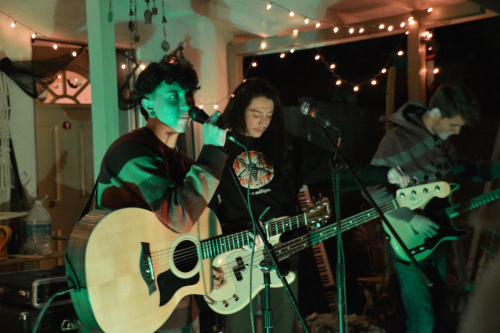Sabino Canyon, located in the Santa Catalina Mountains, is known for its beautiful hiking trails and outdoor nature experiences. Now it has also become a place of astronomical wonder.
The Mount Lemmon SkyCenter, Steward Observatory’s public astronomy outreach program, partnered with the local ranger district for the third year in a row to host Stars Over Sabino. The local community gathered for two days at the Sabino Canyon Visitor Center to explore and hear speaker-led scientific talks by day and to observe the universe at night.
“Little kids it inspires, I love the little kids, the questions,” Vicki Palmer, a volunteer from the Focused Astronomy outreach group, said.
Astronomy enthusiasts were joined by curious hikers of all ages, like attendee Linda Murphy.
“We’ve been coming and doing our walks in the canyon, and we saw the brochure and I went, ‘Oh, let’s go check it out!’” Murphy said.
According to Program Coordinator and Leader Vannessa Gressieux, the event typically brings in an average of 2,000 people each evening.
“I think astronomy is a right,” Gressieux said. “I think for a really long time astronomy has been painted in a way that is inaccessible to the mere mortal. You have to have a degree, you have to be naturally blessed in math and that’s just not the case any longer.”
During the day, volunteers set up specialized telescopes for solar viewing to observe sunspots, and visitors also observed the region’s best traveling meteorite collection.

Stars Over Sabino attendees glance at the region’s best traveling meteorite collection at Sabino Canyon in Tucson Ariz. on March 15, 2024. The Focused Astronomy group, who volunteered for the event, helped to bring in this collection. (Photograph by Laine Kowalski)
After, from 4-7 p.m., three speakers presented their scientific talks.
This year’s nightly speaker series presenters included Program Leader Rob Bovill, who discussed the Vera C. Rubin Telescope; Assistant Professor of Optical Science Dr. Daewook Kim, who discussed the future of large telescopes; Joe Hoscheidt, an expert in telescope and mountain operations; Carson Fuls, Director of the Catalina Sky Survey that spots near-Earth asteroids and distinguished astronomy professor Dr. George Rieke.

Carson Fuls (left), Vannessa Gressieux, Dr. George Rieke and Joe Hoscheidt (right) posing for a photo after the completion of the nightly speaker series at Sabino Canyon in Tucson Ariz. on March 16, 2024. Organized by Gressieux, Stars Over Sabino included scientific talks by these three speakers on the second day of the event. (Photograph by Laine Kowalski)
Dolores Hill, a meteorite research specialist at UA’s Lunar and Planetary Laboratory also presented. She discussed different types of meteorites and how each one is a snapshot in space and time.
“This is how we share information that we learn in the research laboratories,” Hill said. “It’s important for us to be able to explain what we learn, and the community supports us and so it’s the least we could do.”
During these lectures, volunteers from the Mount Lemmon SkyCenter set up around 25 telescopes to prepare for stargazing.
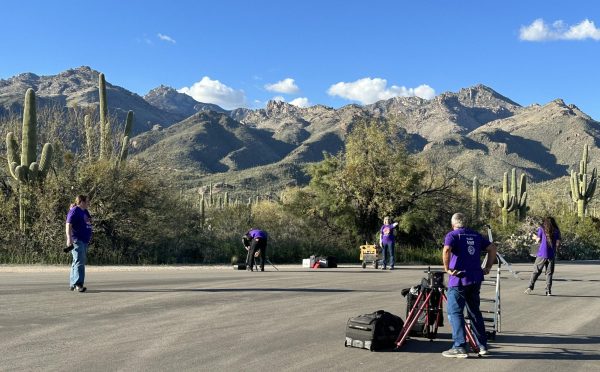
Volunteers set up telescopes along the road outside of the Sabino Canyon Visitor Center at Sabino Canyon in Tucson Ariz. on March 16, 2024. Telescopes were set up in a large circle so attendees could walk around to view different celestial objects in the night sky. (Photograph by Laine Kowalski)
From 7-10 p.m., the community gathered to view the night sky with guidance from astronomy experts. A constellation tour was given by one of the volunteers shortly after the viewing began.
Astronomy enthusiast Wanda Wilkerson described how she observed Jupiter and its four moons as well as Mercury rising. She said viewing Mercury through the telescope was an amazing experience.
“I moved here seven years ago, and I still find people that are native Tucsonian that are not aware, they have not been educated, on the wealth of events, activities and knowledge they can acquire about the night sky, and the absolute thrill of just observing,” Wilkerson said.
The third annual Stars Over Sabino event not only brought the community together to learn about progress in the field of astronomy, but inspired many to find their path amongst the stars.

Astronomy enthusiasts and Sabino Canyon visitors join together to view the night sky outside the Sabino Canyon Visitor Center in Tucson Ariz. on March 16, 2024. Experts guided attendees through the sky, observing objects such as the moon, Mercury rising and Jupiter. (Photograph by Laine Kowalski)



